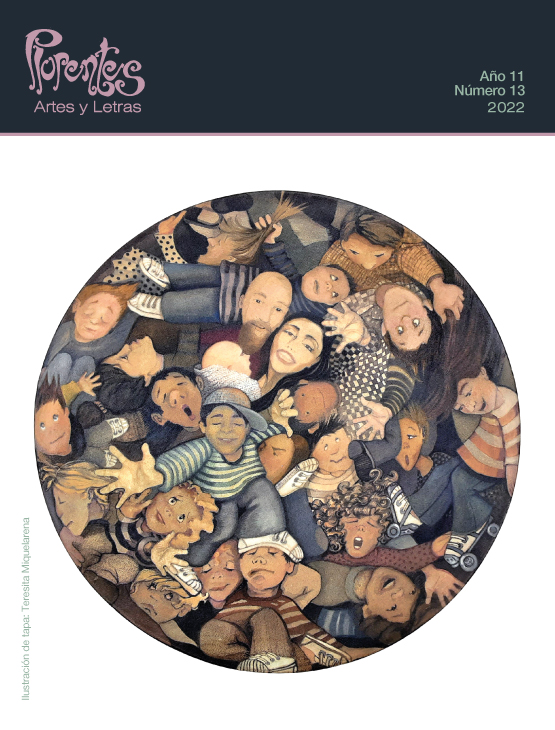Cinema and history. Archive, editing and survivals in El siglo del viento (The century of the wind), by Fernando Birri
DOI:
https://doi.org/10.24215/18536212e044Keywords:
Aby Warburg, Fernando Birri, archive, cinema, historyAbstract
Over the last decades, debates about archives have spread beyond the original field of the historical discipline in order to provide new questions to the way of knowing of anthropology, literary criticism, sociology, cultural studies, and visual studies.
Aby Warburg´s work and his Atlas Mnemosyne are found within this line of ideas and work with archives (both textual and visual).
Considering Warburg´s method of analysis, this article will analyze the work with archives made by Fernando Birri in the movie El siglo del viento (1999).
Downloads
References
Agamben, G. (1995). Estancias. La palabra y el fantasma en la cultura occidental. Valencia: pre-textos.
Birri, F. (1999). El siglo del viento. Recuperado de https://cinefiliamalversa.blogspot.com/2020/04/el-siglo-del-viento-1999-fernando-birri.html
Buchloh, B. (1999). Atlas/Archive. En Alex Codex (ed), The optic of Walter Benjamin, Vol. 3. Londres, Black Dog Publishing Limited, p. 32.
Checa, F. (2010). La idea de imagen artística en Aby Warburg. En Aby Warburg: el Atlas Mnemosyne (1924-1929). Madrid: Akal.
De Certau, M. (2006). La escritura de la historia. México: Universidad Iberoamericana.
Derrida, J. (1977). Mal de archivo. Una impresión freudiana. Madrid: Trotta.
Didi-Huberman, G. (2006). L´image Brule. En Penser per les images. Paris: Cecile Defaut.
Didi-Huberman, G. (2020). Ante el tiempo. Buenos Aires: Adriana Hidalgo.
Didi-Huberman, G. (2009). La imagen superviviente. Historia del arte y tiempo de los fantasmas según Aby Warburg. Madrid: Abada.
Didi-Huberman, G. (2012). Supervivencia de las luciérnagas. Madrid: Abada.
Foster, H. (2004). Archives of modern art. En Design and crime (and other diatribes). Londres y NY, Madrid: Akal.
Foucault, M. (1969). L´arqchéologie du savoir. Paris: Gallimard.
Galeano, E. (1986). Memoria del fuego (Vol. III). El siglo del viento, España: Siglo XXI.
Guash, A. M. (2011). Arte y archivo, 1920-2010. Madrid: Akal.
Guash, A. M. (2009). Autobiografías visuales: del archivo al índice. Madrid: Siruela. Recuperado de https://cinefiliamalversa.blogspot.com/2020/04/el-siglo-del-viento-1999-fernando-birri.html
Mbembé, A. (2020). El poder del archivo y sus límites. Orbis Tertius, 25. 1-7.
Osthof, S. (2009). Performig the archive: The Transformation of The Archives in Contemporary Art from Repository of Documents to Art Medium. Nueva York: Athopos Press.
Rykner, A. (2006). Litterature pas norte, L´imagebouge encore. En Penser per les images. Paris: Cecile Defaut. P.54.
Secula, A. (1986). The body and the archive, October (2), 3-64.
Taccetta, N. (2016). La desmaterialización de la historia en la era del archivo (cinematográfico). De Aby Warburg a Jean-Luc Godard. Revista Crítica Cultura, 11( 1). 29-48.
Warburg, A. (2005). Durero y la antigüedad italiana. En El Renacimiento del paganismo aportaciones a la historia cultural del Renacimiento europeo. Madrid: Alianza.
Published
How to Cite
Issue
Section
License
Copyright (c) 2022 María Cecilia Pavón

This work is licensed under a Creative Commons Attribution-NonCommercial-ShareAlike 4.0 International License.
Acorde a estos términos, el material se puede compartir (copiar y redistribuir en cualquier medio o formato) y adaptar (remezclar, transformar y crear a partir del material otra obra), siempre que a) se cite la autoría y la fuente original de su publicación (revista y URL de la obra), b) no se use para fines comerciales y c) se mantengan los mismos términos de la licencia.





















